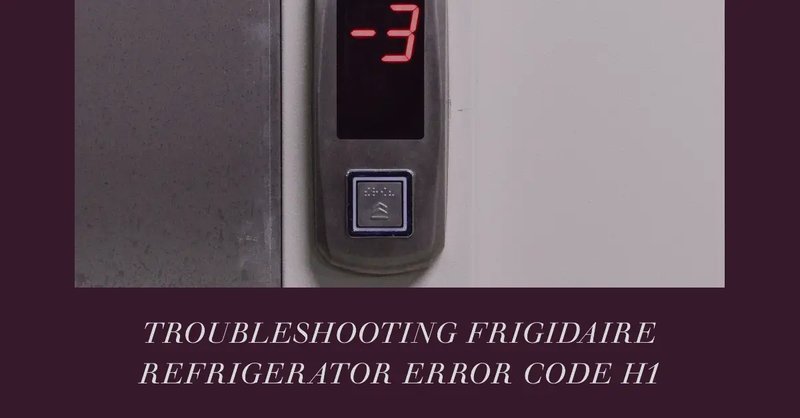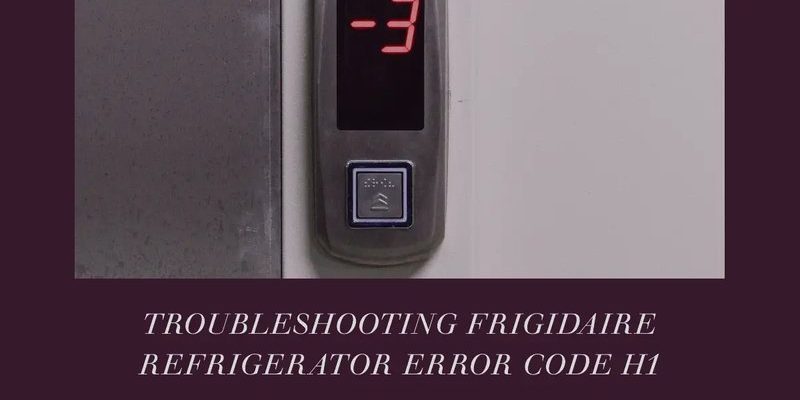
So, what exactly is this “LE” error code? Essentially, it’s your refrigerator’s way of waving a little red flag, signaling that something isn’t quite right. Think of it like the check engine light in your car; it’s an alert that invites you to take a closer look. In the case of the Frigidaire refrigerator, the “LE” error code typically points to an issue with the refrigerator’s evaporator fan motor or its communication with the control board. But don’t let the technical terms intimidate you. We’re here to break it all down in a way that’s easy to understand, even if you’re just starting to dip your toes into the world of appliance troubleshooting.
Understanding the Role of the Evaporator Fan Motor
Before diving into the causes of the “LE” error code, it’s essential to comprehend the role of the evaporator fan motor in your refrigerator. Picture this: your fridge is like a mini ecosystem where cool air needs to circulate to keep everything chilled. The evaporator fan motor is the tiny hero behind this operation, moving the air over the evaporator coils and distributing it throughout the fridge and freezer compartments. Without it, your refrigerator would lose its cool — literally!
Think of the evaporator fan motor as akin to a ceiling fan. When it spins correctly, the entire room (or in this case, the fridge) is cooled evenly. But what happens if the fan starts to wobble or gets stuck? The cooling efficiency drops, leading to uneven temperatures and, ultimately, a fridge that can’t keep its cool. The “LE” error code is a cry for help signaling that this crucial component isn’t doing its job correctly.
What could cause the fan motor to stumble? There are several possibilities, such as physical obstructions, electrical failures, or wear and tear over time. In any case, understanding this component’s function is the first step in diagnosing and fixing the error code.
Common Culprits Behind the Error Code LE
So, let’s talk about what might trigger that vexing “LE” code. One straightforward cause could be a simple blockage. Imagine you’ve got a fan at home that’s surrounded by clutter. It’s not able to circulate air efficiently, right? The same goes for your fridge’s evaporator fan. Ice buildup or food items blocking the fan could cause it to stop spinning, leading to the error code.
Another frequent perpetrator is a faulty fan motor. Over time, the motor parts can wear out, much like shoes that lose their soles after many miles of walking. The friction and constant movement can take a toll, and if the motor stops working, the “LE” code will pop up as a distress call.
Lastly, let’s not forget about wiring issues. If the electrical connections to the fan are loose or damaged, it’s like cutting off its lifeline. The fan won’t receive the power it needs, causing the refrigerator to display the error code as a signal to check these critical connections.
Steps to Tackle the “LE” Error
Now that you know some common culprits, it’s time to get hands-on. Before diving into repairs, however, remember: safety first. Always unplug the refrigerator before starting any internal investigation or repairs.
Begin by inspecting for any visible obstructions around the evaporator fan. If there’s ice or a stray item blocking the fan, gently remove it. Imagine untangling a wayward hose in your garden; it should be straightforward once you find the blockage.
If no obstructions are visible, the next step is to test the fan motor. This might require a bit more technical prowess, such as using a multimeter to check for electrical continuity. It’s like checking if the lights are getting power; it’s a test that determines whether the motor is kaput or just experiencing a temporary glitch.
Lastly, inspect the wiring connections to the fan motor. Ensure they’re secure and undamaged. Loose wires are like untied shoelaces — they need to be fixed to avoid tripping up your fridge’s performance.
Preventative Measures and Final Thoughts
Prevention is always better than cure, and there are ways to shield your fridge from future “LE” errors. Regularly defrost your freezer if you notice ice buildup, as it could hinder your evaporator fan over time. Just as you might routinely check your car’s oil, keep an eye on your fridge’s components and clean or check them periodically.
Remember, if at any point you feel unsure about diagnosing or fixing the issue, it’s entirely okay to call in a professional. Much like how you’d rely on a mechanic for car troubles you can’t handle, an appliance technician can bring your fridge back to life safely and efficiently.
In conclusion, the “LE” error code doesn’t have to cause panic. It’s simply your fridge’s way of saying, “Hey, I need a little help here!” With some patience, understanding, and maybe a bit of elbow grease, you can get your beloved appliance back to its cool, calm, and collected self.
